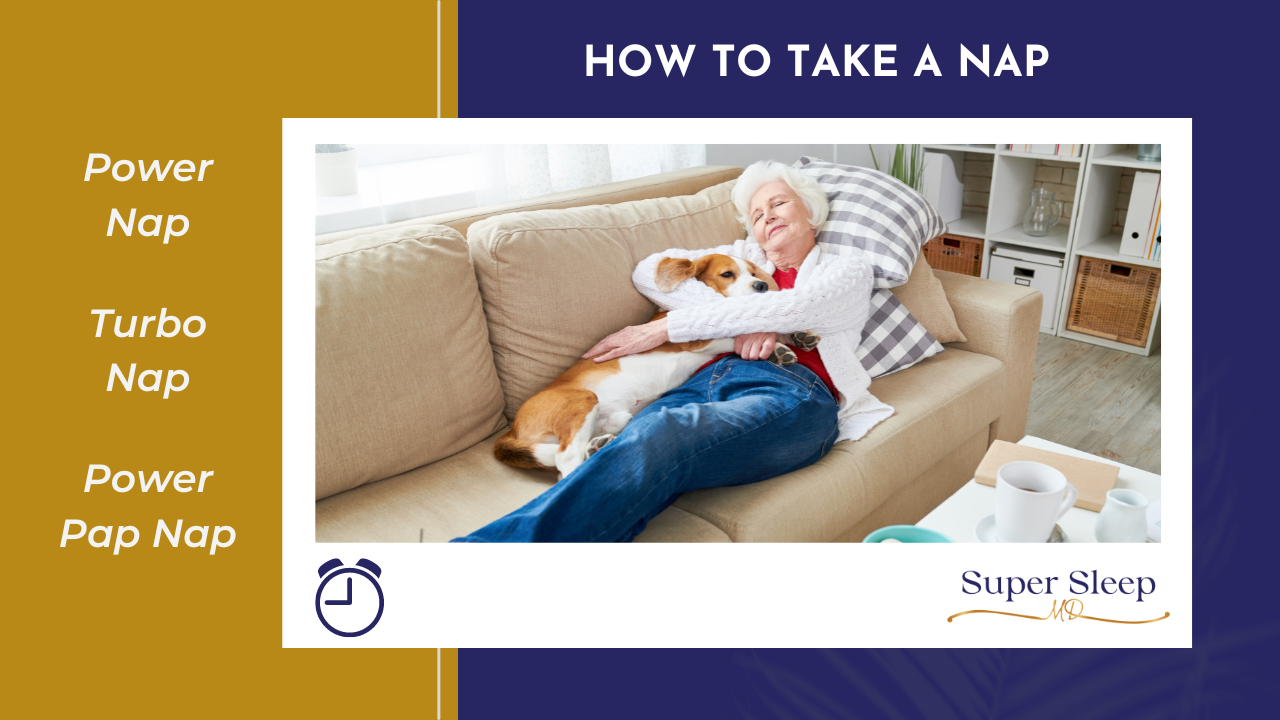Power Nap vs. Turbo Nap
Jan 14, 2023
Short naps, long naps, and everything in between. Sleeping in the middle of the day can give you the boost you need– or it can sabotage your nighttime slumber.
Assuming you’re not working overnight shifts, naps longer than 30 minutes can be difficult to wake up from and cause trouble getting to sleep at bedtime. You may have experienced this in the past–waking up from a long nap feeling really groggy. That’s called sleep inertia. And if you didn’t have trouble getting to sleep at night, then that is a sign you’ve got some sleep deprivation that deserves correction.
Another “red flag” nap is the unintentional nap. Are you falling asleep in your favorite chair? Nodding off at your computer? Head bobbing during meetings? You may be catching a few winks, but it’s not restful or deliberate. This is another sign that you’re not getting enough quality sleep.
Power naps are the way to go. This is a nap that is 10-30 minutes long and you are intentional about your timing and environment.
Steps for a Power Nap:
- Choose your Timing: Nap at midday, between 11 am and 3 pm. Set an alarm for 30 minutes.
- Environment: The room is cool and quiet (or you’re using earplugs or headphones). Lights are dim or you have an eye mask. Get into a comfortable and supported body position– reclined or lying down.
Power naps allow you to take a rest from your day. They can help you to feel refreshed, whether you actually fall asleep or not. It can be a stress reliever and boost your energy during the late afternoon and evening. Your mood can improve. There is even some evidence that power naps may have benefits for your memory and immune system.
How do you power nap with sleep apnea? It’s your choice whether or not to use sleep apnea treatment during a nap. If you choose not to use treatment, it may be more restful to position yourself at an incline instead of lying down.
A power nap can be an opportunity to acclimate to your CPAP mask. Think of it as being “in training” to get used to the mask– so you have to practice. Short periods of wearing your mask during the day take the pressure to sleep off the table and help to normalize the sensation of the mask. This translates into wearing the CPAP mask longer at night (with fewer sleep interruptions) and reducing incidences of waking up suddenly to rip off the mask. Add one step to the Power Nap to make it a Power PAP Nap:
3. Put your CPAP mask on, with or without the air pressure (if you aren’t using air pressure, disconnect the tubing from the mask). Take slow, deep breaths. It may help to listen to relaxing music or a guided meditation. Notice how the mask feels on your skin, and practice acceptance and awareness that it is helping you to breathe.
Finally, there’s what I like to call a “TURBO NAP”. A turbo nap is when you drink a cup of coffee right before a power nap. By the time you are getting up from your power nap, the caffeine is kicking in for a turbo boost. You’ll need to factor in your sensitivity to caffeine (and the timing!) to determine how this works for you. A turbo nap is a tool for those days when you’re really dragging.
You've got sleep problems...
so is it time for a sleep study?

